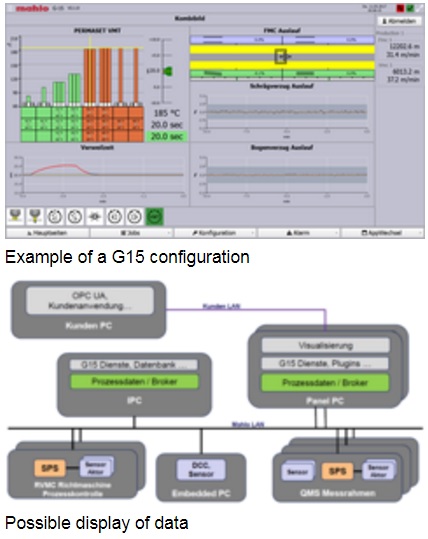Chances, risks and side effects of a visionary revolution
Does the textile industry need Industry 4.0? While textile production was partly responsible for starting the industrial revolution 1.0 at the end of 18th century, the current version is supported by the German government and the economy. Therefore, it is not a product of the industry but more of a vision that should come to life the next years. And that is a good thing. Even for the textile industry. Or better: especially for the textile industry.
A large part of the German textile factories are grown businesses. Modern installations stand side by side with machines every museum would be happy to own. The highlight: often, these old machines were made to specification, designed and built 50 years ago by the company’s owner and the machine builder. The problem is neither the owner nor the technical engineer is still active. But especially these achievements from the past can bring competitive advantage for German companies in the international fight for market shares even today. Only connecting these machines to the remaining corporate structure is causing problems to the manufacturers.

That is where Industry 4.0 starts. Production is redesigned so that the individual units can work independently but are also able to exchange information with each other. The older machines must not be excluded from this process. The opportunity for an exchange has to exist for every part of the value chain. Only if high-quality work from the beginning to the end of the production line is guaranteed, the goods can fulfil the high demands requested from “Made in Germany”-products. And only by knowing the exact data and by optimising the relevant parameters, efficiency and profit can be increased.
Mahlo and Industry 4.0
Here comes the Mahlo-philosophy into play: according to the founder Dr. Eng. Heinz Mahlo’s favourite motto ‘you can only control what you can measure’, the German manufacturer’s process control system collects important data and optimises on this basis the equivalent parameters like speed, residual moisture or the fan speed of the stenter frame. The Bavarian family-owned company focuses on the dryers because they often present a bottleneck in production and set the rhythm for the overall manufacturing process. By using a compatible sensor system and fitting linkage, the customer is not only able to access his machines from everywhere as long as an internet connection is provided, he also has the option to link every machine with a proper connectivity to the network via an OPC UA server – an interface for software from different suppliers. Mahlo’s new generation (G15) of weft straighteners, sensors and control loops are just one click away from the existing machines’ individual data. One special feature is the individual design of the user surface. The machine operator can display thread count, residual moisture, fan speed or dwell time prominently and suitable for his own demands. Always present: skew and bow distortion. Where exactly you see this information on the 12’ touchscreen is the user’s sole decision.
Optimised process controll increases profit
An optimum process control does not just lead to an imminent increase of quality, efficiency and profit. In times of rising tensions between customer and supplier the exact recording of process data is always a hedge against unjustified complaints or stock devaluation. In addition to that, quality standards, which have been achieved by using Mahlo technology, can be provided to partner businesses immediately. Due to this configuration, the same quality can be obtained everywhere in the world. That saves time in the laboratory and pushes the interconnected companies one step closer to 100% ‘right at first time’.
As positive as the interconnection between different machines within the textile production chain can be, it also makes sense to consider the risks. Top ranking are viruses and malware (“WannaCry”). For textile manufacturers, this means that dye kitchens and laboratories are no longer the quality centre. In future the IT will play a superior part in every company. Smaller businesses that cannot afford their own IT-department become dependent on service providers and are forced to pass on their know-how to third-party suppliers.
However, these side effects should not divert the attention from the fact that the identification of the textile goods along the value chain can result in hard cash. The clear language of data in real time allows the user to forgo safety margins and ensures better transparency in every way possible. This in turn leads to savings in energy management and quality assurance as well as a higher efficiency. These factors summed up result in more profit at the end of every working day.
Therefore, the answer to the question asked in the beginning can only be: Yes! The textile industry needs Industry 4.0. So we should ask ourselves when and how we begin to implement it. Regardless if the state funds it or not, the networking will step-by-step enter our working environment. In addition to the challenges which come with the introduction of every new technology (“change management), the employer has to consider how the new role of the machines in the daily work routine is communicated. If you see the factory as a social-economical system, how you include the factor human being will play an important role with the current change of paradigm. More than enough visions exist of how everyday will look like when machines have taken control. None of them is pleasant. So it is our task to build our own enjoyable and economical future.
